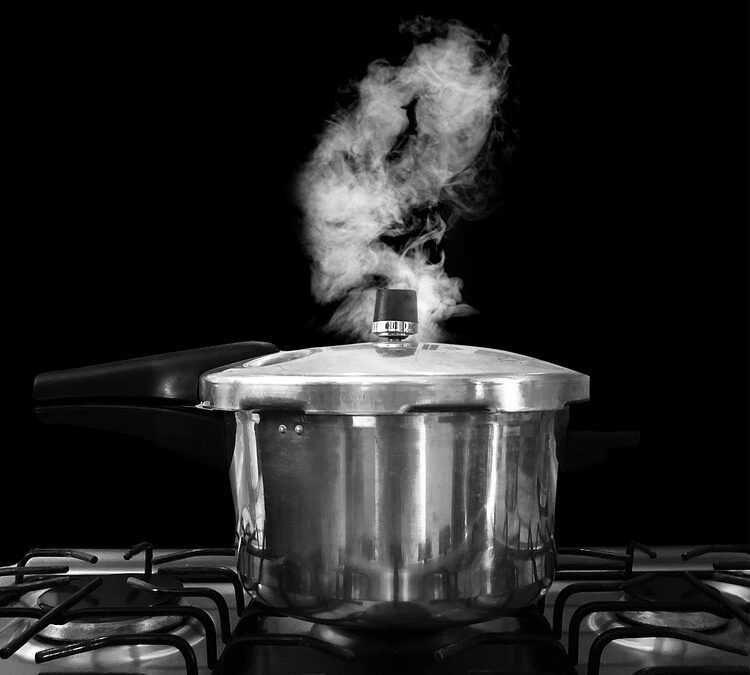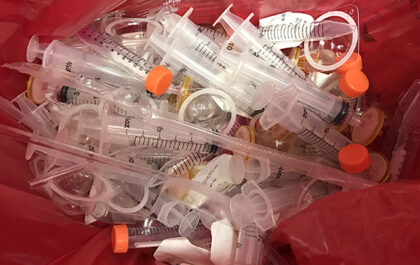Pressure cookers are one of the most useful cooking tools that you can have in your kitchen. While they are used considerably more in Asian countries, where the main application is the cooking of rice and vegetables, they have found popularity in the rest of the world as well.
This method offers a simple and speedy way of cooking food via steam and gives food a tender and moist texture when compared to other cooking methods. Pressure cooking also has a number of benefits, such as the retention of nutrients, more concentrated flavors, time efficiency, and general versatility in terms of what you can do with it.
However, these devices can also be dangerous to work with, and there have been occasions where pressure cookers have exploded, severely injuring those operating them. Thus, knowing how to properly use and take care of a pressure cooker is imperative.
In this article, we are going to explore how pressure cookers work, why accidents happen, and what you can do to prevent them.
Table of Contents
How Do Pressure Cookers Work?
Pressure cookers work by building up steam inside a sealed container. This process creates tremendous pressure inside, which leads to an increase in the boiling point of water. As a result, the food inside a pressure cooker can be cooked faster than in a regular pot on the stove.
To use a pressure cooker, you would fill the cooker with a certain amount of water and add in the desired food that you want to be cooked. (The exact amount of water will depend on the type of food you are cooking.) The lid is then locked in place, and the heat is turned on.
This results in a combination of highly pressurized steam that cannot escape (until it reaches a point where it escapes through the release valve) and an environment of high temperature that cooks the food thoroughly. The entire process might take about ten minutes, with it being longer or shorter depending on the amount and type of food being cooked.
Why Do Failures Happen, and How to Stop Them?
Most of the time, pressure cookers are safe to use and handle, but there have been occasions when manufacturers have released cookers that have not been tested properly or have issues with their quality and safety mechanisms.
When these safety mechanisms fail, the cooker can experience a catastrophic failure that causes either an explosion that spews hot steam, water, and food everywhere.
Severe burns, blindness, and even fatalities have occurred as a result of such blasts and underscore the need to hold pressure cooker manufacturers accountable. In fact, there have been many pressure cooker lawsuit cases where people that suffered from burns pursued legal action against the manufacturers.
TorHoerman Law, LLC, is a law firm that has been helping people with cases like this. They have been filing class action suits and helping individuals fight cases against powerful companies. It can be worth filing a suit if you or anyone you know has experienced harm due to a malfunctioning pressure cooker.
Tips for Staying Safe When Using a Pressure Cooker
Yes, pressure cookers can be dangerous if they are not made well or if they are not cared for properly. However, that doesn’t mean that people should simply stop using them altogether. Let’s look at some important tips when using a pressure cooker.
Clean the pressure release valve after each use: One of the most common causes of pressure cooker explosions is the build-up of pressure beyond the normal point. This can occur when the pressure release valve gets stuck due to food debris or other matter. Thus, it is important to inspect the release valve area carefully before each use and ensure it is clean.
Don’t overfill the pressure cooker: Read the instructions that come with your pressure cooker model. It should have clear instructions on how much you can safely fill up the cooker. Usually, it is dangerous to fill a pressure cooker more than two-thirds of the way full. Anything more than that tends to create an excess build-up of pressure and may cause the cooker to explode.
Check for wear and tear on the gaskets: You also want to carefully check the rubber or silicone ring that sits inside the lid of your pressure cooker. This is known as the gasket. Any tears, cracks, or deformities here can cause an improper seal that might cause the lid to blow when pressure builds up.
Conclusion
Pressure cooking is an efficient method that makes for deliciously cooked food. Pressure cookers are relatively inexpensive and are popular in several parts of the world. The fact that it relies on built-up pressure to cook food does make it a bit risky if the cooker isn’t being used properly or has quality control issues.
Still, learning how to inspect your cooker and following the instructions that come with it can help lower the risks of accidents and provide you with a great cooking experience.
Related posts
When was the first presidential election in the US?
The election process in the world’s most powerful nation, the US, has come a long way. Various amendments have been made to the Constitution that allowed black men, white women and other disadvantaged groups to participate in the elections. Further amendments during the 60s and…
Tips & Trick For Healthy Glowing Skin
Lorem ipsum dolor sit amet, consectetur adipiscing elit. Nam laoreet, nunc et accumsan cursus, neque eros sodales lectus, in fermentum libero dui eu lacus. Nam lobortis facilisis sapien non aliquet. Aenean ligula urna, vehicula placerat sodales vel, tempor et orci. Donec molestie metus a sagittis…
My Fight With Depression. Concussions
Lorem ipsum dolor sit amet, consectetur adipiscing elit. Nam laoreet, nunc et accumsan cursus, neque eros sodales lectus, in fermentum libero dui eu lacus. Nam lobortis facilisis sapien non aliquet. Aenean ligula urna, vehicula placerat sodales vel, tempor et orci. Donec molestie metus a sagittis…
Top 10 most visited tourist places in the world
Lorem ipsum dolor sit amet, consectetur adipiscing elit. Nam laoreet, nunc et accumsan cursus, neque eros sodales lectus, in fermentum libero dui eu lacus. Nam lobortis facilisis sapien non aliquet. Aenean ligula urna, vehicula placerat sodales vel, tempor et orci. Donec molestie metus a sagittis…
How Digital Health Technology Is Beneficial?
Digital health revolves around the usage of diverse technological platforms including mobile health, teen health, configurable remote patient monitoring, etc to improve the connection between the patients and the doctors. Across the healthcare system, the horizon and scope of digital health have helped create opportunities…
How Latest Farmtrac Tractors are Improving Farming in India?
India mostly relies on farming, and a large part of the population depends on it for their livelihoods. Recently, there’s been a big shift towards using modern farming techniques and machinery to make farming more productive and efficient. A good example of this is the…
Dispelling Myths: Demystifying Rx Waste and Expiration Dates – WasteX Pharmaceutical Waste Disposal Separates Fact from Fiction
The specter of “expired” medication looms large, conjuring images of potent chemicals wreaking havoc on water sources and ecosystems. But before you panic toss that bottle of pills, let’s delve into the truth about pharmaceutical waste and expiration dates, separating fact from fiction. At WasteX…
Sustainable Living in Memphis: Green Initiatives and Eco-Friendly Hotspots
Memphis, a city known for its rich cultural heritage and vibrant atmosphere, is increasingly becoming a hub for sustainable living. As environmental awareness continues to grow, residents and businesses in Memphis are embracing green initiatives and fostering eco-friendly practices. Let’s explore the city’s commitment to…
Today's pick
Hot topics
Stay connected
Meet the Author

Gillion is a multi-concept WordPress theme that lets you create blog, magazine, news, review websites. With clean and functional design and lots of useful features theme will deliver amazing user experience to your clients and readers.
Learn moreCategories
- Animals (7)
- Apps & Softwares (8)
- Automotive (8)
- Beauty (8)
- Business (141)
- Cars (12)
- Cartoon (3)
- Cook (4)
- Cooking (1)
- Design (8)
- Economy (6)
- EDUCATION (25)
- Entertainment (16)
- Fashion (23)
- Fitness (2)
- Food (16)
- Gaming (51)
- Guide (20)
- Health (119)
- Home (52)
- Home improvement (12)
- Interior (3)
- Law (16)
- Life (1)
- LifeStyle (99)
- Marketing (5)
- Motivation (9)
- Movie (6)
- Movies (1)
- Music (3)
- News (8)
- Painting Art (1)
- People (15)
- Photography (7)
- Review (113)
- Services (7)
- Social Media (6)
- Sport (9)
- Sports (12)
- Style (10)
- Swimming (1)
- Tech (125)
- Travel (26)
- Uncategorized (17)
- Vape (5)
- Western (3)
- World (2)










